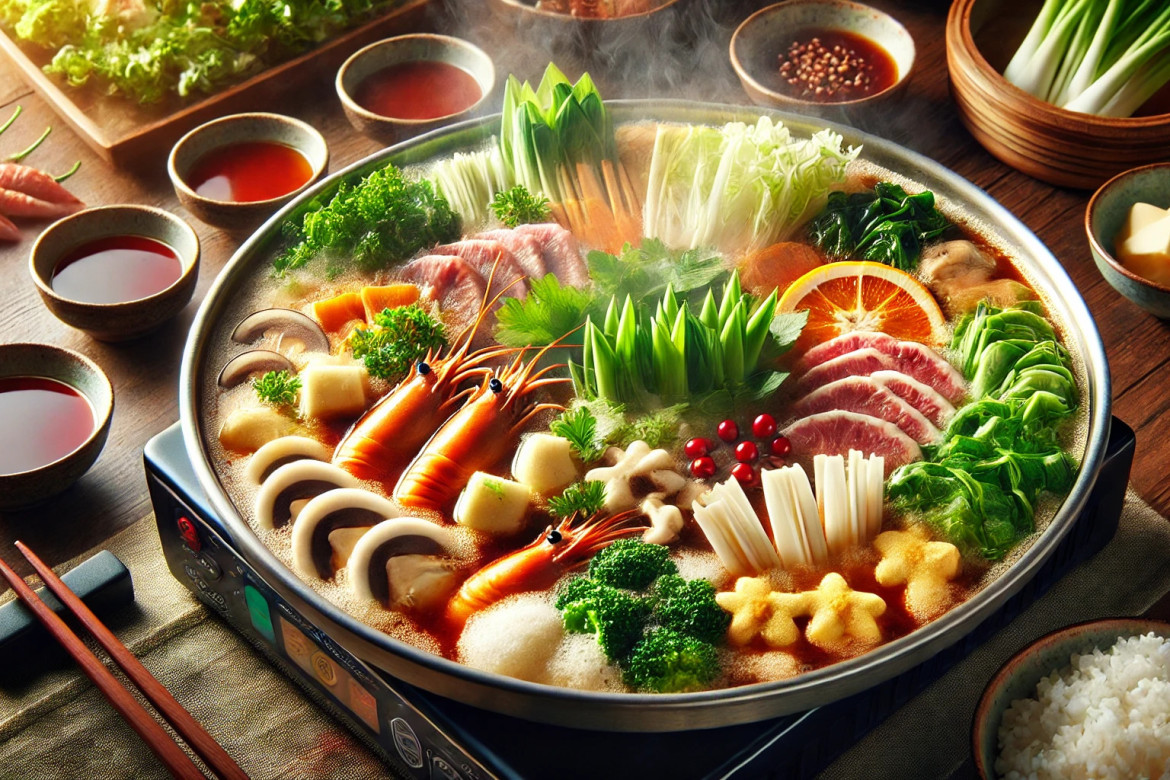
Curious about what kind of food is nabe? This detailed guide explores the Japanese hot pot tradition, its ingredients, types, and recipes. Learn how to make nabe at home and enjoy a taste of Japan.

Nabe, also known as Nabe Hotpot, is a traditional Japanese dish that involves cooking a variety of ingredients in a simmering pot of broth. It’s a communal meal often enjoyed with family and friends, particularly during the colder months. The word "nabe" literally means "pot" in Japanese, reflecting the method of preparation and serving.
Nabe has deep cultural significance in Japan. It's not just a meal but a social event, fostering a sense of togetherness and sharing. The origins of nabe date back centuries, with regional variations evolving based on local ingredients and traditions.
Broth: The foundation of nabe is its broth, which can be made from dashi (a Japanese soup stock), miso (fermented soybean paste), or other flavorful bases.
Vegetables: Common vegetables include napa cabbage, mushrooms, carrots, and leeks. These not only add flavor but also provide a healthy balance to the meal.
Meats and Seafood: Thinly sliced beef, chicken, pork, and seafood like shrimp and clams are popular choices. The proteins cook quickly in the hot broth, making nabe a fast and satisfying meal.
Seasonal Vegetables: Depending on the time of year, different seasonal vegetables are added, enhancing the dish's freshness and nutritional value.
Sukiyaki is a sweet and savory type of nabe. It uses a special broth made from soy sauce, sugar, and mirin (a sweet rice wine). The ingredients typically include thinly sliced beef, tofu, vegetables, and sometimes noodles. Cooking sukiyaki involves simmering the ingredients in the broth, and it's often enjoyed by dipping each bite into a beaten raw egg.
Shabu-shabu is a lighter, more delicate nabe. The name mimics the sound of the ingredients being swished through the broth. Thinly sliced meats, usually beef or pork, and various vegetables are briefly cooked in a simple broth. Shabu-shabu is often served with dipping sauces like ponzu (citrus soy sauce) and sesame sauce.
Chanko Nabe: Traditionally eaten by sumo wrestlers, this nabe is packed with proteins and vegetables. The broth can vary, but it's typically rich and hearty.
Yosenabe: A versatile type of nabe that can include a mix of any ingredients. The broth can be soy sauce-based, miso-based, or even a clear broth.
Mizutaki: A simple and light nabe where the ingredients are cooked in a plain water broth and then dipped in ponzu sauce before eating.

To prepare nabe at home, you'll need a sturdy pot, preferably made of clay or cast iron, to retain heat. A portable stove is also handy for cooking nabe at the table, allowing everyone to participate in the meal preparation.
Nabe is best enjoyed slowly, adding ingredients to the pot as you eat. This ensures everything is freshly cooked. Traditional etiquette includes sharing the pot and ensuring everyone gets a balanced portion. Enhance the experience with side dishes like rice or noodles.
Nabe is a balanced meal, combining proteins, vegetables, and broth. It's low in calories but high in nutrients, making it a healthy option. Ingredients like dashi and miso offer additional health benefits, including probiotics and essential minerals.
In Japan, nabe is particularly popular in winter. The hot broth and communal eating style provide warmth and comfort. This seasonal appeal makes nabe a favorite during family gatherings and holidays.
What is the difference between nabe and other hot pots? Nabe specifically refers to Japanese hot pots and includes various styles like sukiyaki and shabu-shabu. Other hot pots from different cultures have distinct flavors and ingredients.
Can nabe be made vegetarian or vegan? Yes, nabe can easily be adapted to vegetarian or vegan diets by using vegetable broth and plant-based ingredients like tofu and a variety of vegetables.
What are the best side dishes to serve with nabe? Side dishes like steamed rice, udon noodles, and dipping sauces such as ponzu or sesame sauce complement nabe well.
How to store and reheat leftover nabe? Store leftover nabe in an airtight container in the refrigerator. Reheat it gently on the stove, adding more broth if needed to maintain the consistency.
Are there any special sauces or condiments for nabe? Popular condiments include ponzu, sesame sauce, and yuzu kosho (a spicy citrus paste). These add extra flavor to the cooked ingredients.

Nabe plays a significant role in Japanese culture, often served during festivals and family gatherings. It symbolizes unity and the sharing of a meal, fostering a sense of community.
Today, nabe remains popular in both home cooking and restaurants. Its versatility and comforting nature make it a staple in Japanese cuisine, enjoyed by people of all ages.
Classic recipes like sukiyaki and shabu-shabu are time-honored and beloved. These dishes often feature family recipes passed down through generations, emphasizing tradition and authenticity.
Contemporary chefs have introduced fusion nabe recipes that blend Japanese techniques with other culinary traditions. Healthy variations, such as low-sodium broths and added superfoods, are also gaining popularity.
For those with busy lifestyles, there are quick nabe recipes that can be made using instant pots or slow cookers. These recipes maintain the essence of traditional nabe while offering convenience.
Nabe is versatile enough to be included in weekly meal plans. Prepare and store ingredients in advance to make weeknight cooking easier. Nabe can be a balanced meal, providing all essential nutrients.
Whether you're vegetarian, vegan, or gluten-free, nabe can be adapted to suit your dietary needs. Substitute traditional ingredients with plant-based or gluten-free options to create a healthy, satisfying meal.
Making Nabe Hotpot at home is not just about the food but the experience. It’s an opportunity to explore Japanese culture, enjoy communal dining, and create lasting memories with family and friends. To deepen your understanding of nabe, explore cookbooks and online resources. Join communities and forums where enthusiasts share tips, recipes, and experiences.